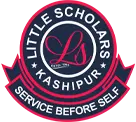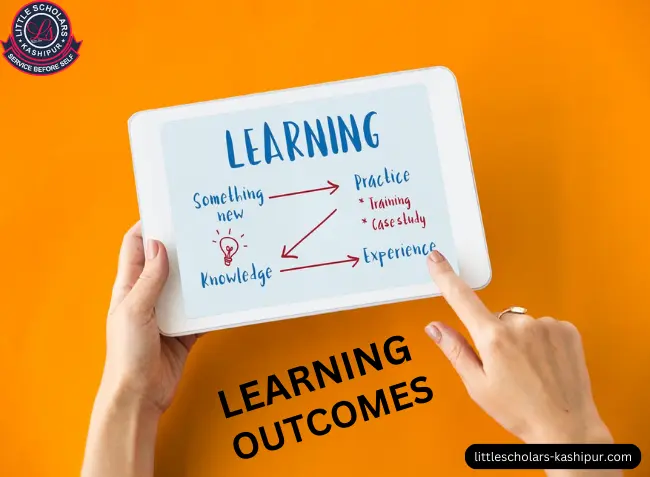Have you ever wondered what makes a lesson truly impactful? What transforms a standard lecture into an unforgettable learning experience? The secret lies in understanding and leveraging learning outcomes. Learning outcomes are the heart and soul of education, guiding both teachers and students toward a shared goal. They ensure that schooling is purposeful, measurable, and meaningful.
What Are Learning Outcomes?
Learning outcomes are specific statements that describe what learners should know, understand, and be able to do after completing a learning activity or course. They are the benchmarks for educational success, providing a clear direction for both instruction and assessment.
Types of Learning Outcomes
Understanding the different types of learning outcomes helps in creating a balanced educational experience. There are three primary types:
Cognitive Learning Outcomes
These are related to knowledge and intellectual skills. They involve understanding concepts, solving problems, and thinking critically. For example, it is important to be able to explain the theory of evolution or solve algebraic equations.
Affective Learning Outcomes
These focus on attitudes, values, and feelings. They are about developing an appreciation for a subject, fostering a positive attitude towards learning, and building empathy. For instance, valuing teamwork in a group project or developing a love for literature.
Psychomotor Learning Outcomes
These pertain to physical skills and actions. They include abilities like playing a musical instrument, performing a dance routine, or conducting a scientific experiment.
How to Define Clear Learning Outcomes
Setting clear learning outcomes is essential for effective teaching and learning. Here’s how to do it:
Setting SMART Goals
Specifically, Measurable, Achievable, Relevant, and Time-bound are the five SMART goals. For example, instead of saying "Students will understand photosynthesis," a SMART goal would be "Students will be able to describe the process of photosynthesis and identify its stages by the end of the week."
Aligning with Curriculum Standards
Ensure that your learning outcomes are aligned with national or state curriculum standards. This alignment guarantees that your educational program meets the required benchmarks and prepares students adequately.
The Essential Guide to Jerome Bruner's Theory of Cognitive Development: Read now
The Role of Learning Outcomes in Curriculum Design
Learning outcomes are the foundation of curriculum design. They help in:
Structuring Educational Programs
By defining what students should achieve, learning outcomes guide the development of curriculum content, instructional strategies, and assessment methods.
Enhancing Teaching Methods
With clear learning outcomes, teachers can choose the most effective teaching methods to help students achieve these goals. Whether it's project-based learning, flipped classrooms, or traditional lectures, the chosen methods are aligned with the desired outcomes.
Learning Outcomes in Various Educational Levels
Learning outcomes vary across different educational stages:
Primary Education
At this level, learning outcomes focus on basic literacy, numeracy, and social skills. For example, being able to read and write simple sentences or understand basic math concepts.
Secondary Education
Here, learning outcomes become more specialized, covering a broader range of subjects. They include critical thinking, problem-solving, and advanced knowledge in specific subjects like science and history.
Higher Education
In universities and colleges, learning outcomes are often related to professional skills and advanced academic knowledge. They prepare students for specific careers and further research.
The Impact of Learning Outcomes on Students
Learning outcomes have a profound impact on students:
Motivation and Engagement
When students understand the goals of their learning activities, they are more motivated and engaged. Clear learning outcomes provide a sense of purpose and direction.
Academic Performance
Well-defined learning outcomes help students focus their efforts on what matters most, leading to improved academic performance. They know what is expected of them and can measure their progress effectively.
Assessing Learning Outcomes
Assessment is crucial to determine whether learning outcomes have been achieved:
Formative Assessments
These are continuous tests that offer feedback while students are studying. They help identify areas where students need improvement and guide them toward achieving the learning outcomes.
Formative Assessment: Boost Learning with Effective Strategies: Read now
Summative Assessments
These are evaluations at the end of an instructional period. They measure the extent to which learning outcomes have been achieved and often contribute to final grades.
Challenges in Measuring Learning Outcomes
Assessing learning outcomes is not without its challenges:
Standardized Testing
While standardized tests provide a uniform measure of student achievement, they often fail to capture the full range of learning outcomes, especially affective and psychomotor outcomes.
Diverse Learning Styles
Students have different learning styles, and a one-size-fits-all assessment approach can be limiting. It's important to use a variety of assessment methods to accommodate these differences.
Using Technology to Track Learning Outcomes
Technology offers innovative ways to track and enhance learning outcomes:
Learning Management Systems (LMS)
LMS platforms like Moodle and Canvas help teachers create, track, and assess learning outcomes. They provide tools for online quizzes, assignments, and interactive learning activities.
Data Analytics in Education
Data analytics can identify trends and patterns in student performance, helping educators make informed decisions to improve learning outcomes.
Improving Learning Outcomes Through Feedback
A useful tool in the learning process is feedback:
Importance of Feedback
Students who receive timely and helpful feedback can better identify their strengths and growth areas. It motivates them to keep striving towards their learning goals.
Effective Feedback Techniques
Effective feedback should be specific, actionable, and focused on the learning outcomes. Instead of saying "Good job," try "You did a great job explaining the main concepts of photosynthesis. Next, let's work on providing more examples."
Case Studies: Successful Implementation of Learning Outcomes
Example 1: A High School Success Story
At Springfield High School, the implementation of clear learning outcomes led to a significant improvement in student performance. By aligning teaching methods with specific goals, the school saw a 20% increase in overall grades and student engagement.
Example 2: University Program Improvement
The University of Riverside revamped its curriculum by defining precise learning outcomes for each course. This approach not only improved student satisfaction but also boosted the employment rate of graduates by 15%.
The Future of Learning Outcomes
The landscape of education is continually evolving, and so are learning outcomes:
Trends in Educational Technology
With advancements in technology, personalized learning experiences are becoming more common. Adaptive learning platforms can tailor educational content to meet individual student needs, ensuring better learning outcomes.
Shifting Pedagogical Approaches
Educators are moving towards more student-centered approaches, such as project-based and experiential learning. These methods emphasize practical skills and real-world application, leading to more meaningful learning outcomes.
Conclusion
Learning outcomes are the cornerstone of effective education. They provide a clear roadmap for both teachers and students, ensuring that educational activities are purposeful and impactful. As we continue to innovate and adapt in the field of education, the importance of well-defined learning outcomes cannot be overstated. They are the key to unlocking the full potential of every learner.




